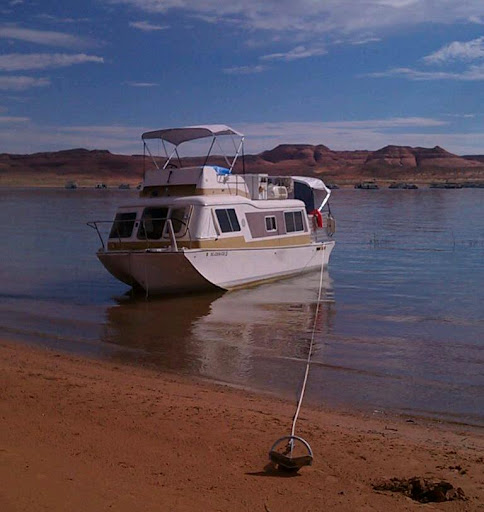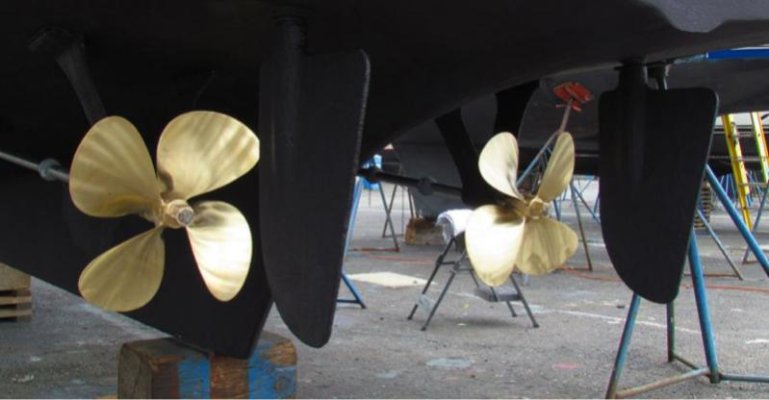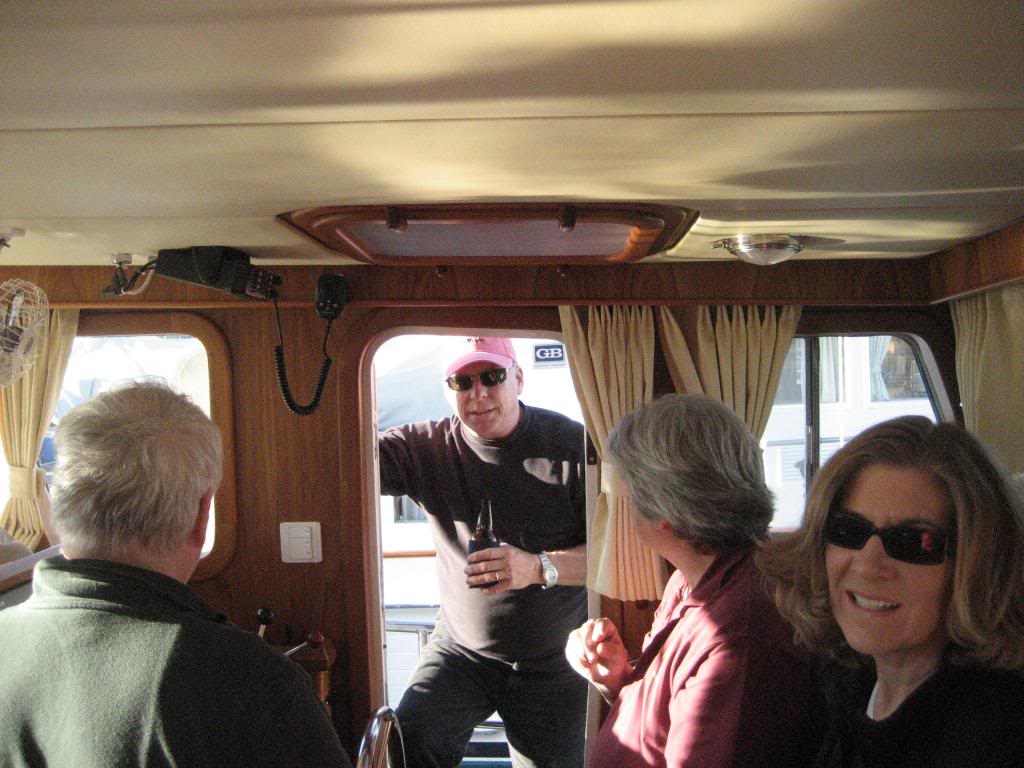Why does every posting having to devolve into a discussion of twin versus single. The never ending debate..... The poor guy actually asked some very good questions...
Re-reading Pluto's original post it seems he had two basic questions. Paraphrased, they were how vulnerable in reality is the running gear on the so-called go-fast boats, and can a go-fast boat be controlled accurately and safely at slow speeds?
My short answers are "very" and "it depends."
Having never run a V-bottom go fast boat other than our Arima fishing boat, I can only say that the Arima slides all over the place at slow speeds while maneuvering. At slow speeds, by which I mean the 4 knots that is so often the speed limit in harbors, the boat "wanders" in terms of heading and requires ongoing helm corrections although they are not serious. I assume a larger boat of the same no-keel, V-hull configuration will be somewhat similar.
The friends we boat with have a 36' lobsterboat. Commercial lobsterboat hull with a larger house and forecabin on it for cruising. It is a semi-planing hull made to go about 15 knots with 420 hp. With fuel prices the way they are, they run the boat these days at about 8-9 knots. The boat seems to be quite steady at that speed in terms of holding a heading.
But..... being a lobsterboat hull it has a fairly substantial keel. So it tracks well at any speed.
When the water gets rough, however, they kick it up to 12 to 15 knots because at slow speeds in rougher water the hull really wallows around despite the keel. So speed is the solution to smoothing out the ride and tracking accurately in his boat.
In our heavy (30,000 pound), deep keel (comparatively speaking), boat, the tracking in rough water is just as good as the tracking in smooth water unless the waves are coming from astern and trying to knock the boat into a broach. But where we get knocked around constantly by following waves, our friend simply speeds up to where he is going faster than the waves. End of problem.
The exposed running gear on a twin and the risk thereoff is a question that relates only to twins--- it's not a single vs twin question. To that, the only answer can be, "It depends on the boat and the waters the owner is cruising in." Up here, there is a lot of stuff in the water. I know that in our Arima at 30 mph, we have to be pretty alert to what's out ahead of us. We bought the boat new in 1987 and haven't hit anything damaging yet but we've had to do a few hard (sliding) turns to avoid something that got past our distance scan.
The GB at 8 knots is a much easier platform to see what's out there and have plenty of time to avoid it. And there is no slide to its turns and the rudders are big so it's easy to maneuver precisely in tight quarters or to thread one's way through a crab pot float field or miss the deadhead Mark illustrated on the first page of this thread.
In the end I think Pluto has to decide what kind of boating he wants to do. Fast, slow, or somewhere in between. GBs can be run fast (like 15, 16 knots) if you put enough engine power in them but the fuel consumption goes thorugh the roof. A late model GB42 with the stock 400-plus hp Cats in it burns about 6-7 gph to go about 9 knots. These engines will push the hull up to a continuous cruising speed of 15 knots or so very comfortably, but now the fuel burn is 23-24 gph. So not quite twice the speed for almost four times the fuel burn.






 I know of several larger twin screws pleasure on one engine will not steer worth a darn, and most do not have a deep draft or a keel.
I know of several larger twin screws pleasure on one engine will not steer worth a darn, and most do not have a deep draft or a keel. 

